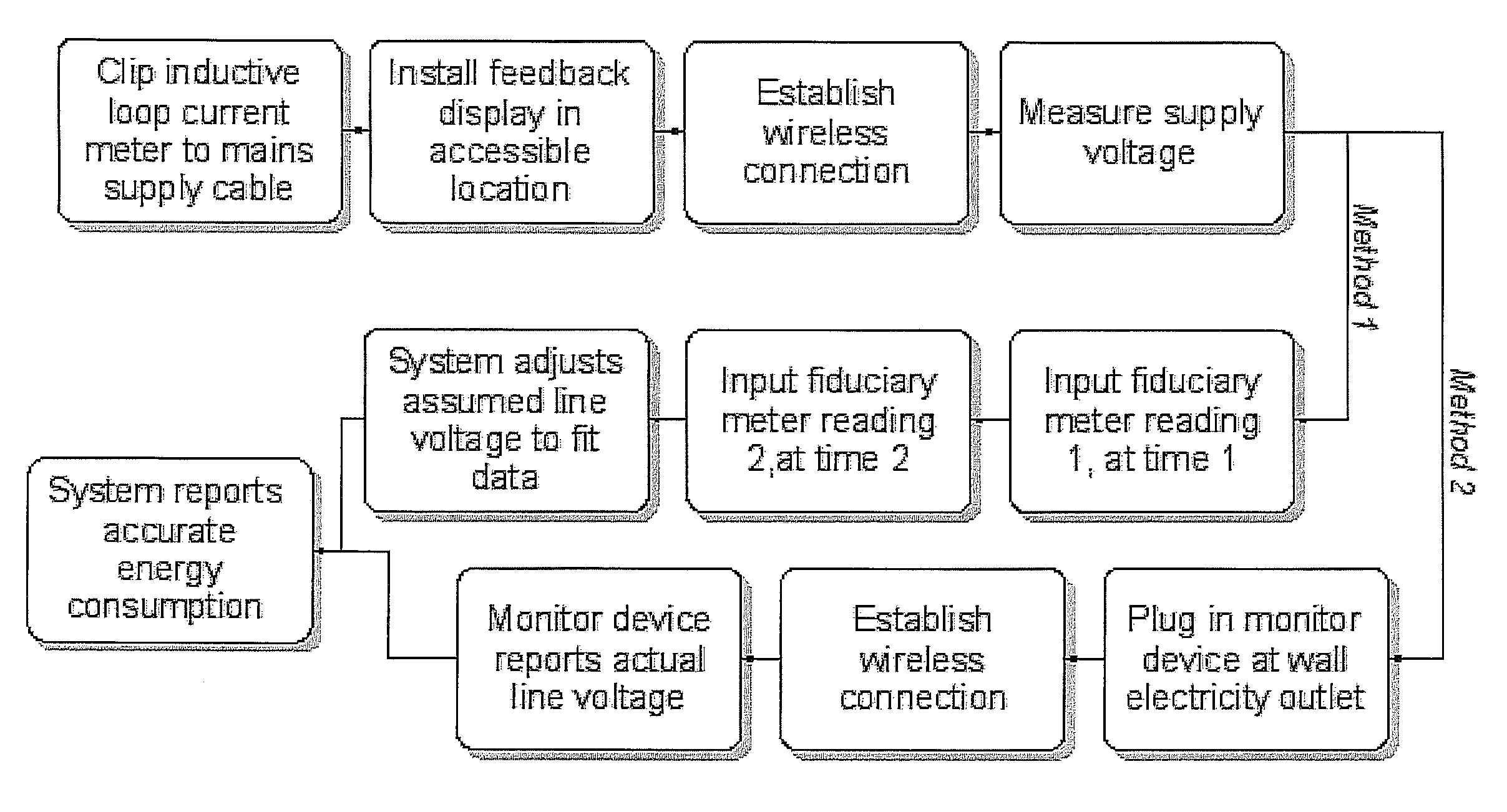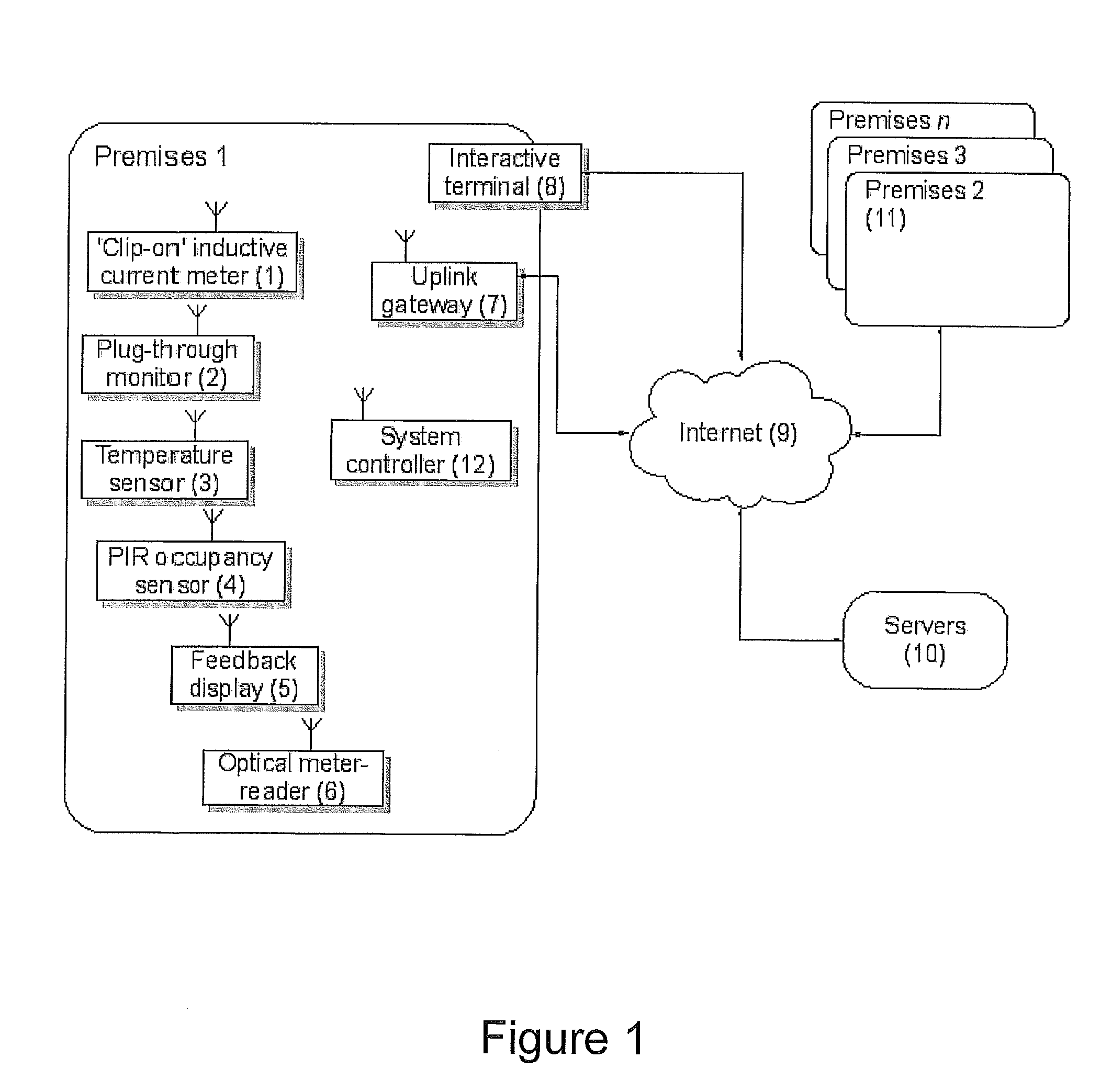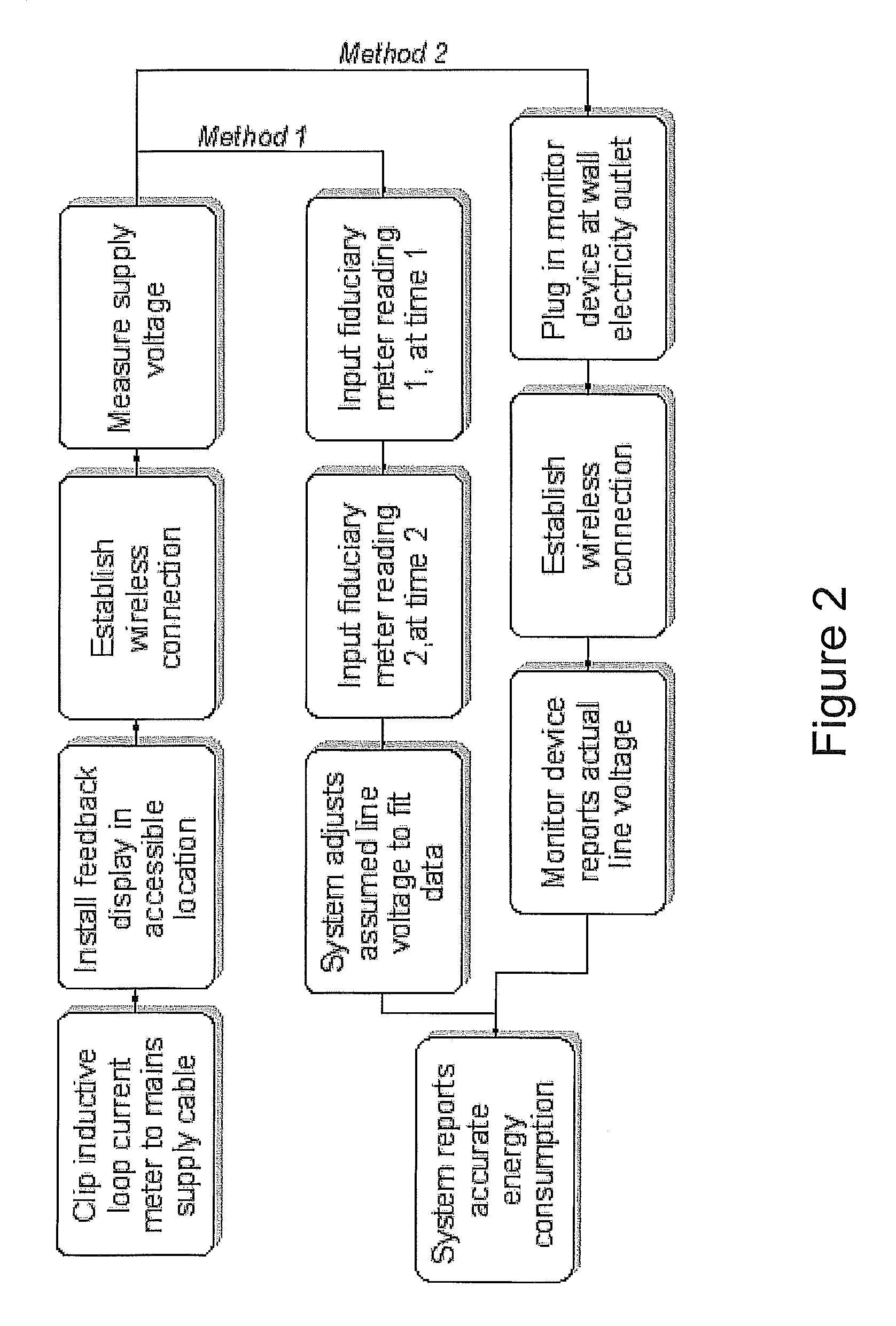Power consumption feedback systems
a technology of power consumption and feedback system, applied in the direction of electric digital data processing, electric vehicles, instruments, etc., can solve the problems of large expense, difficult access to locations, and employing specialist staff, and achieve the effect of improving accuracy and energy efficiency
- Summary
- Abstract
- Description
- Claims
- Application Information
AI Technical Summary
Benefits of technology
Problems solved by technology
Method used
Image
Examples
Embodiment Construction
[0047]FIG. 1 shows schematically various components of a comparative energy feedback system. A customer's premises is outfitted with energy-related sensors including, of those shown, some subset. For accurate energy reporting the core elements are the “clip-on” inductive current meter (1), a system controller (12) and a feedback display (5).
[0048]The system controller (12) computer logic for calculating power usage from the current measurements may be separate, located remotely off site as part of a client-server application architecture, or co-located with the inductive current meter (1), the feedback display (5) or an uplink gateway (7). In any case at least two of these devices communicate using a local-area wireless communications protocol, using proprietary RF modulation schemes and protocols, or standards such as IEEE 802.15.4 (WiFi), Bluetooth®, or ZigBee®
[0049]Occupancy sensors (4) may be included in the system to allow the computer logic to change its behaviour according to...
PUM
 Login to View More
Login to View More Abstract
Description
Claims
Application Information
 Login to View More
Login to View More - Generate Ideas
- Intellectual Property
- Life Sciences
- Materials
- Tech Scout
- Unparalleled Data Quality
- Higher Quality Content
- 60% Fewer Hallucinations
Browse by: Latest US Patents, China's latest patents, Technical Efficacy Thesaurus, Application Domain, Technology Topic, Popular Technical Reports.
© 2025 PatSnap. All rights reserved.Legal|Privacy policy|Modern Slavery Act Transparency Statement|Sitemap|About US| Contact US: help@patsnap.com



